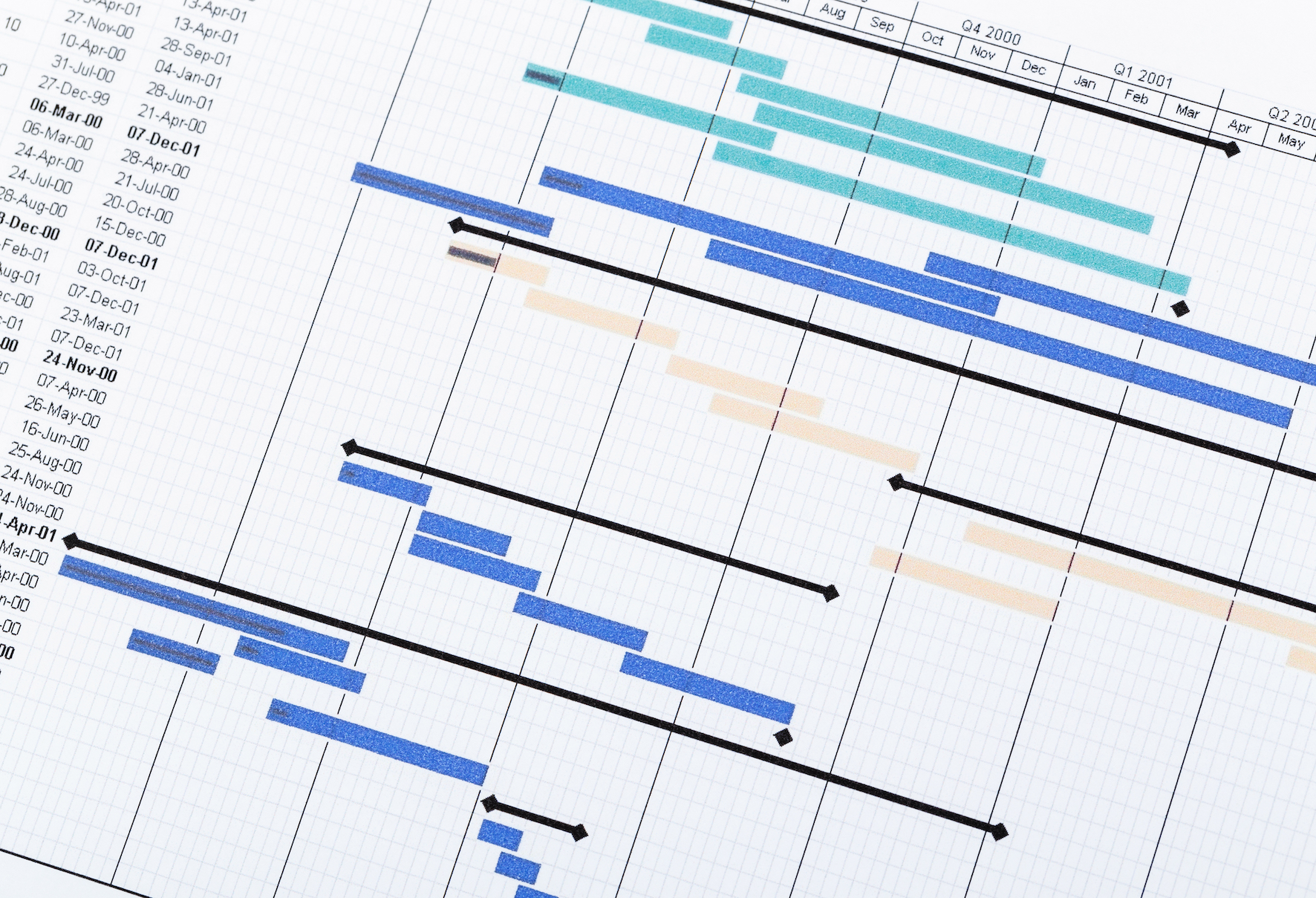Project planning is a fundamental process in project management, rooted in strategic thinking, clear communication, and effective organisation.
If you’re a forward-thinking project manager or business leader aiming to deliver projects successfully and efficiently, then this comprehensive guide is for you.
We will define project planning, exploring its purpose, key stages, essential tools, and how to overcome common challenges in project delivery.
Additionally, we provide practical tips and examples to show how effective project planning can set the foundation for project success.
Let’s get started.
Project planning is the phase within the project management process that sets the foundation for project success. During the project planning phase, teams define the project objectives, outline the project scope, and map out the steps needed to deliver a successful project plan.
A solid project plan ensures that everyone from the project sponsor to the project team is on the same page right from the start.
The project planning process involves creating a detailed roadmap that guides the entire project through the project lifecycle, from initiation to closure.
This includes establishing a clear project timeline, determining key milestones, identifying task dependencies, and ensuring proper resource allocation for both human resources and other project resources needed for the project work.
To create a project plan effectively, project managers often use project planning tools and project management templates. These tools help organise tasks, manage project requirements, and easily track deliverables.
Whether you are managing multiple projects or focusing on a single initiative, using project planning software or a free project plan template can significantly streamline the planning phase.
A well-developed project management plan includes important elements like the work breakdown structure, a project budget, a risk management plan, and strategies to prevent scope creep. Addressing potential project risks early improves the likelihood of a smooth execution phase and successful completion.
Ultimately, an effective project planning process ensures the project team can stay aligned, meet project deadlines, and achieve the defined success criteria — not just for this project, but for every project to come.

Effective project planning tools help project managers and teams visualise the work involved, allocate project resources efficiently, and maintain control over the project timeline and project dependencies.
Choosing the right tools ensures the project planning process is structured, clear, and aligned with the project objectives from start to finish.
In this section, we’ll explore some of the most important tools available, from building a work breakdown structure to using project planning templates and project management software, so you can select the best approach for managing your whole project from initiation to successful completion.
A work breakdown structure (WBS) is a visual, hierarchical breakdown of the entire project into smaller, manageable sections. It divides major deliverables into tasks and subtasks, making it easier to estimate the project budget, allocate resources, and schedule activities.
For example, building a new website might break down into phases like “Design,” “Development,” and “Testing,” with each phase further divided into specific tasks.
Creating a WBS during the planning phase helps identify task dependencies, organise project work, and ensure nothing critical is missed before moving into the execution phase.
Project planning templates are pre-designed documents or frameworks that help structure the planning process without starting from scratch. Common examples include Gantt charts, project schedules, risk management plans, and project charters.
Templates help you define the project scope, set key milestones, allocate human resources, and monitor project progress consistently across multiple projects. A free project plan template can be particularly helpful for teams needing a quick but structured starting point.
Project management software provides digital platforms designed to help you plan, organise, and manage projects more efficiently.
For complex projects involving several teams and stakeholders, using project management software provides greater visibility, better communication methods, and tighter control over the entire project lifecycle.
Choosing the right mix of templates and tools depends on your project’s complexity, the resources needed, and how closely you need to monitor progress for successful delivery.

Creating a project plan is one of the most important steps in setting your project up for success. A solid project plan acts as a roadmap, helping the project team, the project sponsor, and all key stakeholders stay aligned throughout the entire project lifecycle.
In this chapter, we’ll break down the essential elements you need to plan effectively: building a realistic project timeline, setting key milestones, identifying task dependencies, and allocating project resources efficiently.
Whether you’re managing multiple projects or creating your first plan, this guide will help you organise all the tasks, monitor project progress, manage project requirements, and achieve your project goals on time and within budget.
Let’s dive in and start building your detailed project plan.
A project timeline provides a clear schedule that outlines when tasks and deliverables should be completed. It keeps teams focused, aligned, and accountable across the entire project lifecycle.
How to Plan It:
A well-thought-out timeline builds in contingency time to absorb unexpected delays, helping teams maintain momentum without constant rescheduling. Planning realistically protects deadlines and boosts team morale by setting achievable expectations.
Milestones mark the completion of major deliverables or project phases and help measure progress and celebrate achievements.
How to Plan It:
Well-placed milestones keep the team motivated by marking visible progress and providing opportunities to spot risks early. They act as checkpoints that help maintain momentum and adjust the plan if necessary.
Task dependencies define how tasks are connected — when one task must finish before another can start.
How to Plan It:
Visualising dependencies also allows project managers to coordinate resource handovers more smoothly and prevent bottlenecks during execution.
Resource allocation ensures that the right people and tools are available at the right time to complete project tasks efficiently.
How to Plan It:
Beyond initial allocation, cross-training team members or identifying backup resources can strengthen your project’s resilience to unexpected challenges.
Clear success criteria and strong scope management are vital for delivering a successful project plan. Without them, it’s easy for project objectives to drift and scope creep to derail progress.
Success criteria define the specific outcomes needed for a project to be considered complete. They should be SMART: Specific, Measurable, Achievable, Relevant, and Time-bound.
Including success criteria in your project charter and management plan ensures that the team understands what success looks like and can track deliverables accordingly throughout execution.
Scope management means clearly defining what the project includes, and what it doesn’t.
Start by documenting all project requirements during initiation, then use a work breakdown structure to organise them into deliverables and tasks.
Throughout the project lifecycle, monitor closely for scope creep. Formalise change request processes and assess any changes against the original project goals and success criteria to stay on course.
Strong communication methods help ensure everyone stays aligned and understands where the project’s true focus should remain.
Identifying and managing project risks and task dependencies early increases the chances of on-time delivery and project success.
A risk management plan outlines potential obstacles and strategies to address them.
Brainstorm risks with your team and key stakeholders early — such as supply chain delays or resource shortages — and assess each risk based on likelihood and impact.
Prioritize risks and assign owners responsible for monitoring them. Proactive risk planning ensures your project stays resilient even when unexpected issues arise.
Monitor Risks and Dependencies Continuously

Successfully reaching the project closure phase is a major achievement, but closing a project isn’t just about handing over deliverables.
Conduct a “lessons learned” session with your team to discuss successes, challenges, and improvement opportunities.
Document findings to create practical tools, like updated planning templates or refined risk management strategies, that strengthen future project outcomes.
Finishing strong means taking pride in the journey and turning every experience into a foundation for even smarter, stronger projects ahead.
Effective project planning is about more than just setting timelines and assigning tasks, it’s about creating a structured, flexible path that leads the team toward shared goals.
Throughout this guide, we’ve explored how choosing the right tools, creating a detailed plan, managing scope, addressing risks, and reflecting on lessons learned can significantly improve your project delivery.
Before we finish, here’s a recap of the key lessons:
By following a thoughtful, structured approach and steering clear of avoidable setbacks, you’ll be well on your way to delivering projects with greater confidence, clarity, and lasting success.
PM3 is an award-winning portfolio, programme, and project management tool designed to bring clarity from complexity. Unlike other resource management softwares, PM3 focuses on the outcomes of projects and programmes, ensuring that resources are effectively managed to achieve project goals.
Whether you are managing a simple project or a complex portfolio, PM3 provides the clarity and control needed to ensure that your projects deliver the desired outcomes.
Image Sources: Astrid.IQ

Our products help you deliver successful change programmes and projects by always focusing on the overall business outcomes. Find out how our products can help you.
Tell me more Request a DemoAre you struggling to understand how to plan a project that keeps you and your team on target? In th...
Read more >The majority of PMOs that are, what we call ‘value-adding’ PMOs, will need to produce dashboards...
Read more >